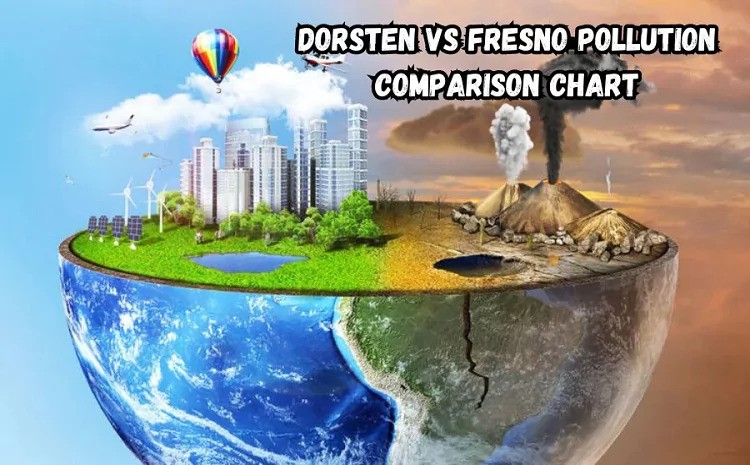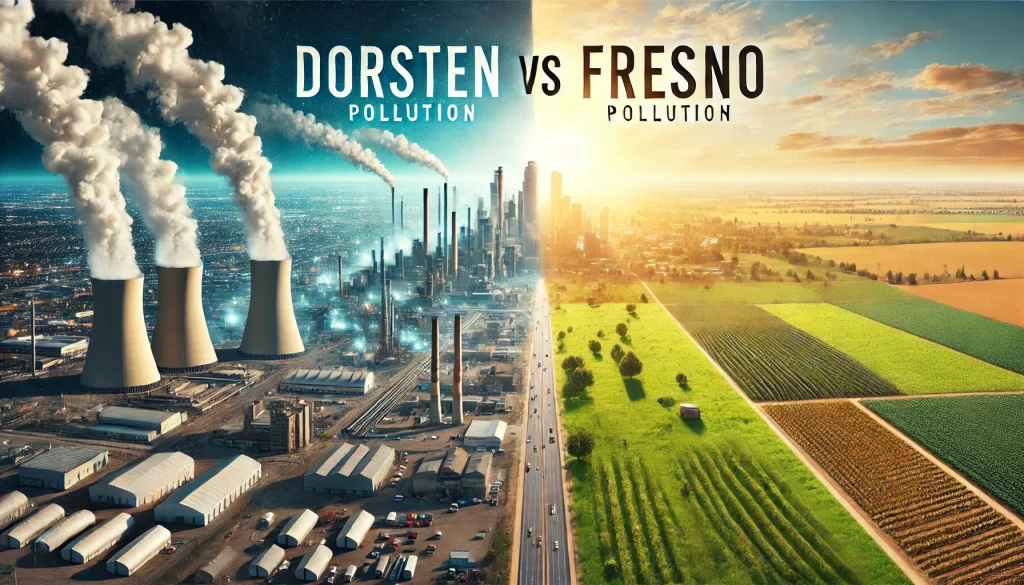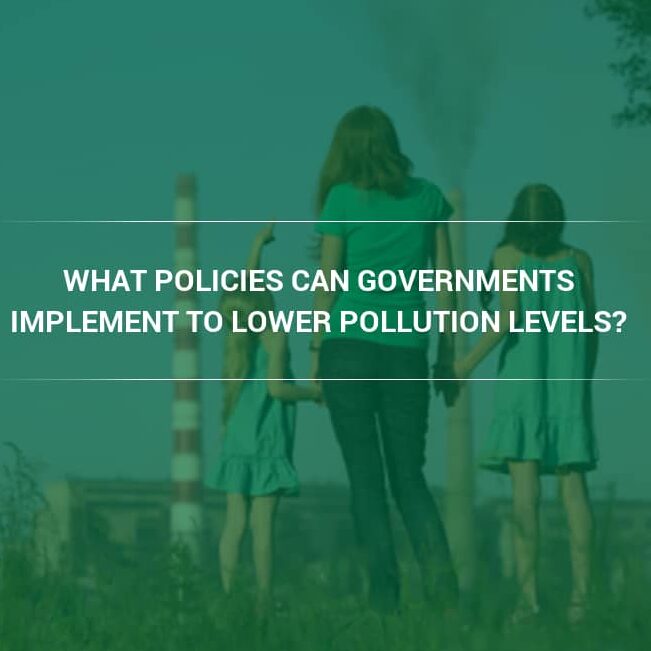Dorsten vs Fresno Pollution Comparison Chart -Quick View!
Living in both Dorsten and Fresno, I noticed a big difference in air quality. The Dorsten vs Fresno pollution comparison chart highlights how Dorsten feels much fresher compared to Fresno’s heavy smog.
The Dorsten vs Fresno pollution comparison chart highlights the key differences in air quality between the two cities. Dorsten has cleaner air , while Fresno struggles with pollution. This comparison helps understand how different factors affect pollution levels and health.
Stay tuned with us as we dive deep into the Dorsten vs Fresno pollution comparison chart! We’ll explore how these two cities’ pollution levels differ and what it means for your health and the environment.
Dorsten Vs Fresno Pollution Comparison Chart – A Simple City Overview!
Dorsten
Dorsten, a medium-sized city in North Rhine-Westphalia, Germany, has a rich industrial history with coal mining and steel production. While the city is shifting towards renewable energy and eco-friendly tech, the legacy of industrial pollution still impacts its air quality.
Fresno
Fresno, a key agricultural hub in California’s Central Valley, is home to over 500,000 people. The city struggles with air pollution due to its valley location, where temperature inversions trap pollutants. Agriculture, vehicle emissions, and urban sprawl make air quality a constant challenge.
Air Pollution Comparison – Key Sources in Dorsten vs Fresno!
Pollution in Dorsten:
- Industrial Emissions: Dorsten’s past industries, like coal mining, steel making, and manufacturing, have caused high pollution levels, including harmful gases and particles, which affect the city’s air quality.
- Transportation and Traffic: Since Dorsten is in the Ruhr region, a busy industrial area, traffic is another big cause of pollution. Emissions from vehicles, especially diesel trucks, release harmful gases like NOx, carbon monoxide (CO), and tiny particles that pollute the air.https://storytellershat.com/dorsten-vs-fresno-pollution-comparison-a-comparative-study-on-pollution-levels-and-impacts/
- Residential and Urban Development: Urban sprawl and the heating of residential buildings also contribute to pollution. The burning of fossil fuels for heating during the winter months increases emissions of CO2 and particulate matter.

Pollution in Fresno
- Agricultural Emissions: In Fresno, farming plays a big role in pollution. Chemicals like pesticides and fertilizers not only harm the soil and water but also create smog, making the air worse, especially during peak farming times.
- Vehicular Emissions: Fresno’s air pollution is worsened by heavy truck traffic and older vehicles that release carbon dioxide, NOx, and harmful particles. This is especially bad in summer when temperature inversions trap pollution in the air.
- Temperature Inversions: Fresno’s location in the Central Valley makes air pollution worse in summer. The valley’s shape traps pollution close to the ground, causing smog and poor air quality to last longer.
Also Read: The Impact of Data Privacy Laws on Tech Companies
Health Impacts of Pollution – Dorsten vs Fresno Comparison!
Pollution in both Dorsten and Fresno has serious effects on residents’ health. While both cities face air quality issues. The types of pollution and their impact on health can differ. Below is a comparison of the health risks caused by pollution in both cities.
| Health Impact | Dorsten | Fresno |
| Breathing Problems | Pollution causes asthma and bronchitis, especially in children and the elderly. | Ozone and particles make asthma worse, mainly in children. |
| Heart Problems | Pollution can lead to heart attacks and strokes. | Pollution causes heart disease and high blood pressure. |
| Mental Health Effects | Pollution can cause stress. | Pollution leads to anxiety and depression. |
| Overall Health Impact | Pollution harms vulnerable groups like children and the elderly. | Fresno has high asthma rates and mental health issues from pollution. |
Air Quality Comparison – Dorsten vs Fresno Pollution Levels Revealed!
The Air Quality Index (AQI) is a standardized measure used worldwide to assess the quality of the air in urban areas. It ranges from 0 to 500, with higher numbers indicating worse air quality.

Also Read: Ennuifans – The Ultimate Platform to Monetize Your Creativity!
Dorsten’s AQI:
The average AQI in Dorsten is usually moderate, ranging from 35 to 90. However, pollution can spike, especially during industrial activities, which can make the air unhealthy for sensitive groups.
Fresno’s AQI:
Fresno often has higher AQI levels, especially in summer. The AQI frequently exceeds 100, reaching unhealthy levels (101-150) or even very unhealthy levels (151-200), mainly due to vehicle emissions, farming, and temperature inversions.
Dorsten vs Fresno AQI – Yearly Comparison of Air Quality Levels!
Here is the comparison of the Air Quality Index (AQI) levels of Dorsten and Fresno over the past year. This comparison will be based on yearly pollution data to better understand how air quality differs between these two cities and what it means for residents!
| Month | Dorsten AQI | Fresno AQI |
| January | 45 | 125 |
| February | 50 | 135 |
| March | 55 | 150 |
| April | 65 | 140 |
| May | 60 | 155 |
| June | 70 | 160 |
| July | 75 | 170 |
| August | 80 | 180 |
| September | 55 | 160 |
| October | 50 | 150 |
| November | 45 | 130 |
| December | 40 | 120 |
Government Actions to Fight Pollution–Key Initiatives!
Measures Taken in Dorsten
Dorsten follows strict EU rules to cut emissions, use green energy, and improve air quality. The city promotes public transport, cycling, and renewable energy to help reach these goals.
- Emission Control: Industrial plants in Dorsten are subject to strict emission standards, and the city has been active in phasing out coal plants in favor of renewable energy projects.
- Green Spaces and Sustainable Urban Planning: The city has invested in increasing green spaces, which help absorb CO2 and improve air quality. Urban planning now emphasizes sustainability and reducing the dependency on personal vehicles.

Also Read: Broccoli Baron LoL – Guide for Beginners and Pros!
Measures Taken in Fresno
Fresno follows tough air quality rules from the California Air Resources Board (CARB) to reduce vehicle pollution, use clean energy, and cut down on farm pollution.
- Smog Check Programs: Fresno has implemented rigorous vehicle inspection programs to limit vehicular emissions. The state of California also enforces strict vehicle emissions standards that have helped reduce pollution over the years.
- Green Agricultural Practices: The local government is working with farmers to adopt cleaner agricultural practices, such as reducing pesticide use and implementing more sustainable farming techniques to improve air quality.
Pollution Trends to Watch in the Future!
Dorsten’s Future Pollution Outlook
With Germany’s commitment to achieving carbon neutrality by 2050, Dorsten is likely to see a decrease in industrial emissions over the coming decades. The push for electric vehicles, renewable energy, and sustainable urban planning will play a significant role in reducing the city’s pollution levels.
Fresno’s Pollution Outlook
Fresno’s pollution levels may continue to remain high due to its reliance on agriculture and the ongoing growth of the city. However, efforts to reduce vehicular emissions, implement stricter environmental policies, and adapt climate change mitigation strategies could lead to significant improvements in air quality.
Top Solutions to Improve Air Quality in Dorsten & Fresno!
Both Dorsten and Fresno can benefit from implementing additional strategies to combat pollution. These may include
- Promote Clean Energy: Transition to renewable energy sources like solar, wind, and hydropower to reduce reliance on fossil fuels.
- Improve Public Transport: Expand and promote eco-friendly public transport options to reduce vehicle emissions and traffic congestion.
- Encourage Cycling and Walking: Build bike lanes and pedestrian-friendly areas to encourage more sustainable transportation methods.
- Upgrade Vehicle Standards: Implement stricter emission standards for vehicles, including trucks, to reduce air pollution from traffic.
- Support Green Technology: Invest in clean technologies for industries and agriculture to cut down on harmful emissions.
- Raise Awareness: Educate communities about the impact of pollution and ways to reduce their carbon footprint, like energy conservation and waste reduction.
- Strengthen Regulations: Enforce stricter environmental regulations for industries and agricultural practices to control pollutants.
- Increase Green Spaces: Create more parks and green spaces in urban areas to improve air quality and provide natural pollution filters.
- Encourage Sustainable Farming: Promote organic farming and reduce the use of harmful chemicals like pesticides and fertilizers.
- Improve Waste Management: Enhance recycling programs and reduce waste to lower pollution levels.
Also Read: Pokémon Weakness Chart – Counter Every Type!
FAQs About Dorsten vs Fresno Pollution Comparison Chart
What are the primary sources of pollution in Dorsten?
Industrial emissions, transportation, and residential heating contribute significantly to Dorsten’s pollution levels.
How does Fresno’s geography affect its pollution levels?
Fresno’s location in the Central Valley makes it prone to temperature inversions, which trap pollutants near the surface, leading to poor air quality.
Why is Fresno’s air quality worse than Dorsten’s?
Fresno’s high agricultural activity, combined with vehicular emissions and geographical factors, results in consistently higher pollution levels compared to Dorsten.
What can be done to improve air quality in Fresno?
Reducing agricultural emissions, promoting electric vehicles, and increasing green spaces could significantly improve Fresno’s air quality.
How does pollution impact health in Dorsten and Fresno?
Both cities face similar health risks, including respiratory and cardiovascular diseases, due to high levels of pollution.
What is the Air Quality Index (AQI) worldwide?
The Air Quality Index (AQI) worldwide measures the level of air pollution across different countries and regions.
How is the Air Quality Index world ranking determined?
The Air Quality Index world ranking compares the pollution levels of cities and countries to determine which has the worst air quality.
What is the worst air quality in the world today?
The worst air quality in the world today is often found in cities in countries like India, China, and Pakistan, with AQI levels exceeding 200 or even 300.
How is the Air Quality Index ranking determined?
The Air Quality Index ranking is determined based on real-time monitoring of pollutants like PM2.5, PM10, CO2, and ozone.
What is considered a normal Air Quality Index?
A normal Air Quality Index is usually between 0 to 50, indicating good air quality with minimal health risk.
What is the Air Quality Index today?
The Air Quality Index today varies depending on your location; check local AQI reports for accurate information.
What is the highest AQI ever recorded?
The highest AQI ever recorded was 1,000+ in some cities like New Delhi, India, during severe pollution events.
Which is the most polluted city in the world?
The most polluted city in the world often changes, but cities like New Delhi, India, and Lahore, Pakistan, frequently top the list.
Conclusion
This detailed comparison of Dorsten and Fresno highlights the unique challenges both cities face in addressing pollution. While Dorsten has made strides toward improving air quality through industrial reforms and environmental policies, Fresno continues to battle agricultural emissions and vehicular pollution. Both cities must continue working towards greener, more sustainable futures to protect the health of their residents.

